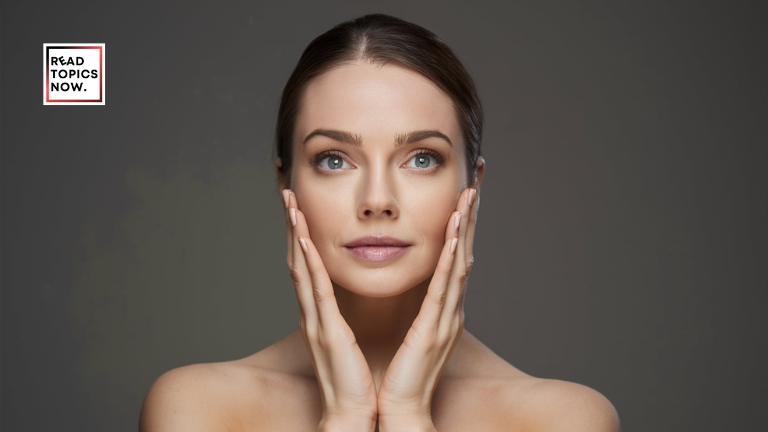
Know Why You Need Face Yoga. Skin Care Routine, Glowing Face

What Is Face Yoga?
Face yoga, or specific movements that target the facial muscles, is touted on social media as a way to change the shape of your face and help you look younger. More research is needed, but some claim face yoga exercises can plump the cheeks, erase wrinkles, and make skin glow. You might be able to decrease jowls, which give the appearance of a “double chin,” and reduce eye strain.
Does yoga for the face really work? Some evidence suggests that face yoga can provide modest results, but it takes a fair bit of work. You may not notice results until after several weeks. Read on to learn about face yoga, including exercises, and whether it improves appearance.
How Face Yoga Works
The face is made up of three different layers that sit on top of the skull. The outermost layer is the skin. Under that lie two layers of fat: subcutaneous fat (which sits right below the skin layer) and deep fat (which sits below the subcutaneous fat). These pockets of fat fit together and are what give your face shape and fullness. Under the fat are the facial muscles, most of which are quite small.
Gravity pulls the skin downwards as you age, which can create sagging on the face. The face loses the layer of fat that creates plumpness in younger faces, creating a more hollow look. The skin and bones also begin to thin.
Face yoga works by targeting individual muscles in the face, either through certain facial movements or massaging your face with your hands and fingers. These exercises won’t grow back lost fat in the face; only injections or cosmetic surgery can do that. Face yoga instead may help bulk up some of the muscles, making your skin look smoother.
Benefits of Face Yoga
Some people swear by face yoga for helping to tone, lift, and smooth their faces, but research on these benefits is lacking. A study published in 2018 included 16 middle-aged people who did 30 minutes of specific facial exercises for 20 weeks. Each person received instruction on 32 facial exercises and attended two 90-minute sessions with a certified facial exercise instructor.
The participants did the exercises every day for eight weeks and then switched to every other day. The regime seemed to minimally improve fullness around the cheeks and in the lower face but didn’t seem to have an effect on other parts of the face. The participants maintained the initial results with fewer days of exercise per week, but it’s unclear how frequently people would need to keep it up to maintain results.
Some people may notice the modest benefits of face yoga. Others may find that contorting the skin can increase the risk of wrinkles. It’s also important to keep in mind that fullness in the face is largely dependent on genetics and body weight.
Face Yoga Exercises
Boost Circulation
Gently tapping the face can help improve circulation. Start by placing your fingertips on your forehead and lightly tapping the skin. Continue tapping along your face until you reach your jaw.
Decrease Jowls
Jowls are sagging skin around the jawline. Try this face yoga exercise to firm this area:
- Form a fist with one hand and place it on the outside of your jaw.
- Turn your head toward your fist until you feel a stretch in your neck. Gently press your jaw into your fist.
- Hold this position for about 30 seconds before gently moving your head back to the starting position. Repeat on the opposite side.
Reduce Eye Strain
You might develop eye strain if you spend a lot of time looking at screens. Here’s a face yoga exercise that can improve the appearance of your eyes:
- Gently place a fingertip on the inner corner of your eyes and then press down. Hold for about 30 seconds.
- Move your fingertip in circles for 30 seconds.
- Repeat this circular motion in the opposite direction.
Relax Your Face
The Lion’s pose is a face yoga exercise that can release tension and relax your facial muscles. Here’s how to do it:
- Sit down on a chair and place your hands on your knees.
- Deeply inhale through your nose and then open your mouth, sticking out your tongue.
- Stretch your tongue toward your chin. Make a “ah” sound while exhaling through your mouth.
- Relax your face.
- Repeat about five to seven times.
Smoothen Brows
It can be difficult to work the small muscles in your forehead, but you may be able to smoothen your brows. This exercise targets the frontalis muscle, or the large muscle in the center of your forehead:
- Place your fingertips on the frontalis muscle, facing them inward. Apply gentle pressure to the skin.
- Slowly move your fingertips toward your temples and then release.
- Continue this movement for about 30 seconds.
Scientific Evidence and Skepticism
While some people believe in the benefits of face yoga, scientific evidence is limited. The 2018 study mentioned earlier is one of the few pieces of research available, and its results were modest at best. Additionally, results can vary greatly between individuals. Factors like genetics and body weight play a significant role in how effective face yoga might be for any given person.
Practical Tips for Practicing Face Yoga
To get the best results from face yoga, consider these practical tips:
- Use a Mirror: Practicing in front of a mirror can help ensure you’re doing the exercises correctly.
- Be Consistent and Patient: Like any exercise regimen, face yoga requires consistency and patience. It may take several weeks before you start noticing results.
- Combine with Other Skincare Routines: Face yoga can be more effective when combined with a comprehensive skincare routine, including proper hydration, moisturizing, and sun protection.
Conclusion
Face yoga includes exercises and self-massages that target the facial muscles. Some try face yoga with the goal of slimming their face and reducing wrinkles. Face yoga may help boost circulation, relax your facial muscles, and reduce eye strain. Overall, trying face yoga is pretty low-stakes and could be a better fit for some than having any procedures done. However, facial movements likely won’t achieve long-lasting or significant, noticeable results. Options like filler, skin resurfacing, or cosmetic surgery offer more definite results.
FAQs
1. How effective is face yoga?
Face yoga can provide modest results in improving facial muscle tone and appearance. However, the results vary widely among individuals and are generally less dramatic than cosmetic procedures.
2. How long does it take to see results from face yoga?
It may take several weeks of consistent practice before you start noticing results. Patience and regularity are key.
3. How does face yoga compare to cosmetic procedures?
Face yoga offers a natural, non-invasive approach to improving facial appearance, but it typically yields less dramatic results compared to cosmetic procedures like fillers or surgery.
4. Can I include face yoga in my daily routine?
Yes, face yoga can be easily incorporated into your daily routine. Aim for a few minutes each day or every other day to see the best results.
5. Are there any risks associated with face yoga?
Face yoga is generally safe, but improper technique or excessive force can potentially cause strain or wrinkles. It’s important to follow instructions carefully and be gentle with your skin.
Get Curated Post Updates!
Sign up for my newsletter to see new photos, tips, and blog posts.






